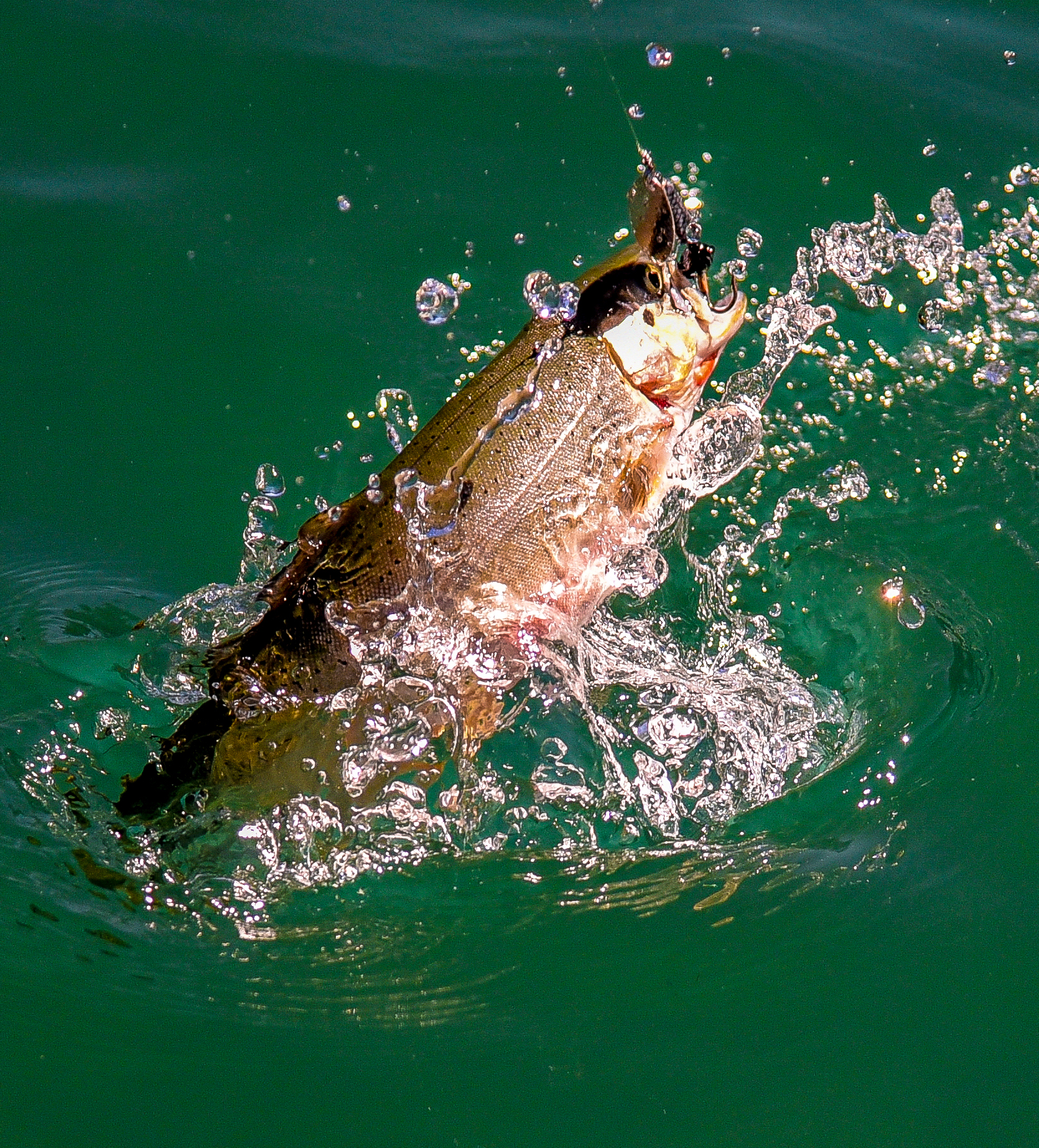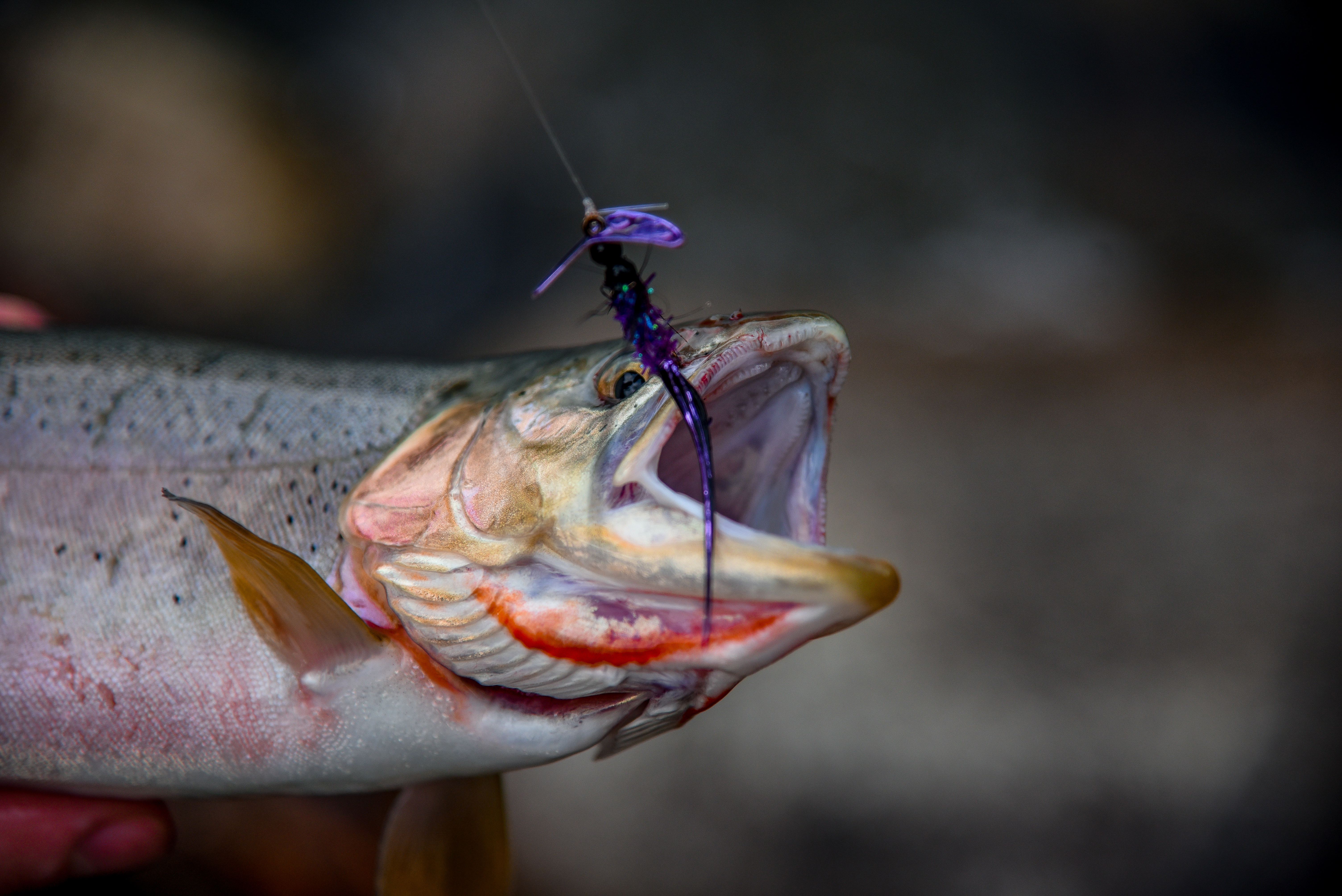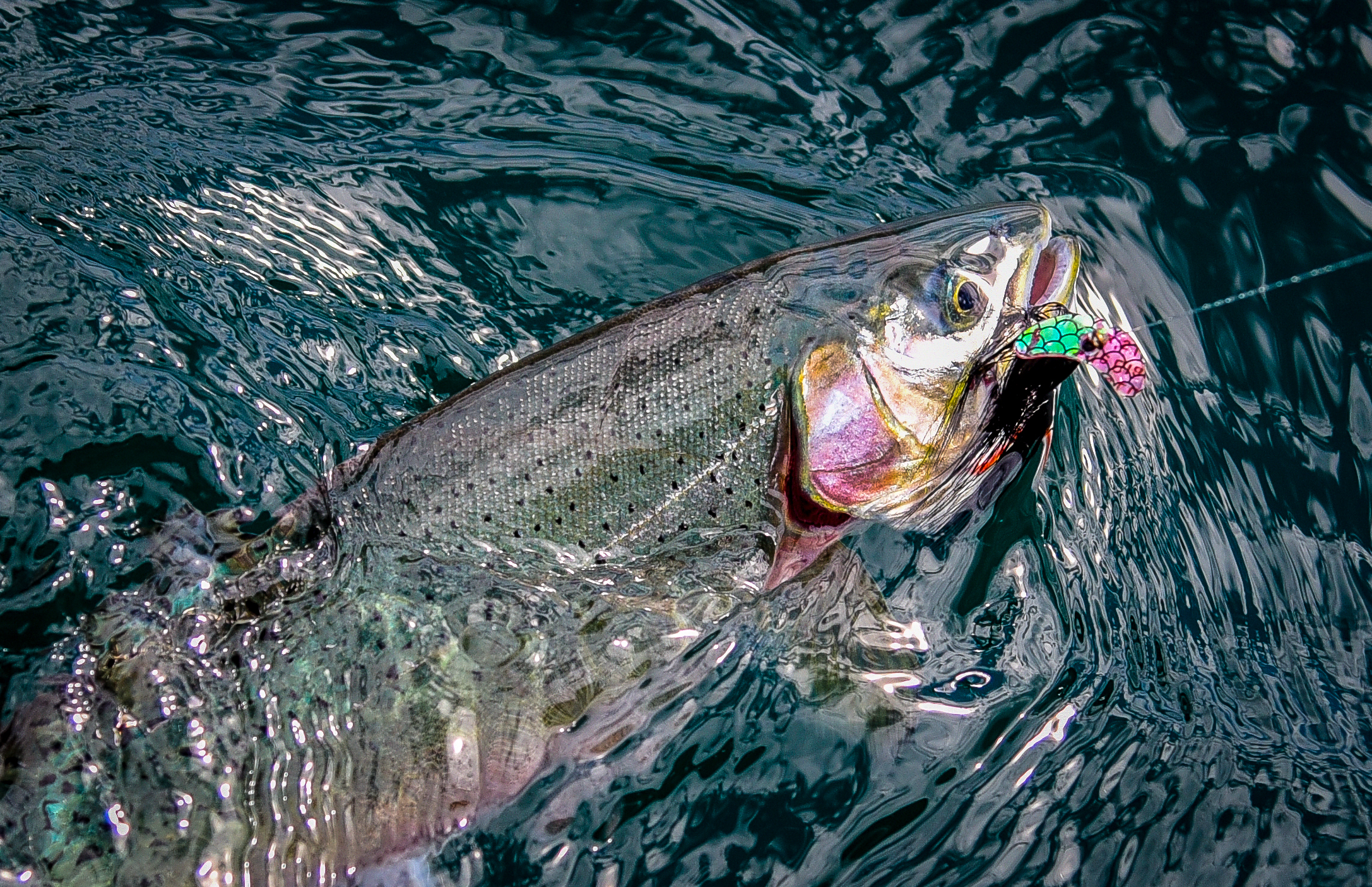Fall Trout
by
Jason Brooks, September 06, 2020
Maybe it’s the crisp and cold mornings or it could be the lack of people on the water but fall trout fishing is one of my favorite outdoor activities. The fish are often bigger than the spring planted fish and they fight hard too. For those that like to keep a trout or two for dinner you will notice the flesh is firm and has good taste. Fall trout is something every angler should take the time to do.
The fishing itself is not like the springtime where most will soak a bait and wait for the bite. In the fall the fish are actively feeding and getting ready for winter and colder water. Insects are hatching throughout the day, especially in the afternoon. For those that like to use dry flies you can sleep in and enjoy an evening bite. But the bugs are wiggling their way up out of the mud in the morning and floating up to the surface where they will dry and hatch. A strike indicator and a handful of chironomid’s is all it takes to head to the lake for the day. Some anglers find this to be boring but with the lake mostly void of other anglers you will soon realize that it is a relaxing way to fish. There are several lakes that are restricted to fly fishing only or selective gear rules that make for some great fishing.
Anglers that prefer to troll or cast lures will find willing biters attacking small spoons and spinners. Gold and silver color blades with dark bodies, such as a 1/8 ounce black Rooster Tail or Promise Keeper spinner are top choices. Mack’s lure has a Smile Blade fly that is a wooly bugger with a smile blade on front and pulls double duty as a fly and a spinner. Keep the speeds slow as this is trout and they will chase after the lures but will also give up quickly if it pulls away too fast. One other lure that does really well when trolled for trout is the MagLip 2.0 and 2.5. These small plugs have an extreme side to side action and dive down below the surface. They can be trolled flat lined with no weight so when you hook into a fish it is a lot of fun to reel them in.
Regardless if you like to fly fish, troll flies, or use hardware the fish will be in shallower water. This is because the water temperature is getting cooler and the bugs are emerging from shallow waters. This means structure and shoreline will hold fish. Recently I was fishing a very large lake and really didn’t know where to start. We trolled along the shoreline and as we came around a point into a calm cove the rods erupted. On the windward side of the point we didn’t get a bite but on the leeward side we caught several fish. This is because the bugs were lazily flying along the surface where the air was calm and of course no bugs in the wind. The fish figured it out and soon we did too.
Because the fish are found closer to shore this means those that have a float tube, pontoon, or small boat do really well. In fact, while we trolled along in my larger Hewes Craft we found that we had to stay a bit further from shore while a small rowboat passed by between us and the bank and caught more fish.
Outfalls and tributaries are great places to find fish. This is because bugs get washed into the lake or where a current is created and the fish can hold in one spot and have water flush through their gills. For tributaries flowing into a lake it often means a water temperature change and bugs. Plus, the fish can swim by and use the current. For outfalls the fish use it much like how a steelhead uses a tailout to rest. If the lake water is still warm the flowing water makes it easy for the trout to rest and feed. Spinners seem to do really well at these locations as it entices a bite from a resting fish that has gained its energy back.
In lakes with no creeks flowing in or an outflow then look to the large flats where bugs will emerge. The bug activity will tell you where the fish are. The water in lakes during the fall often don’t have a well-defined thermocline as it is “turning over” which happens each spring and fall when the air temperature changes. This is why you will find the fish closer to shore as the water temperature is pretty stable throughout so the fish use structure for cover and are actively feeding. Daylight plays into the bite as well. Like most days of summer the worst time to fish is during the middle of the day when the sun is high, but since daylight is fading fast in the fall this window is usually short, about an hour or two and by mid-afternoon the bite will be back on. This is because the sun is at an angle and not “harsh” it allows shadows to be cast by structure that can hide the fish.
If lakes aren’t what you are looking for then some of the best fall trout fishing is found in creeks, streams and rivers. Water conditions are often very low which is where the dry fly angler has the advantage over the hardware user. Again, shadows are your friend as you will spook fish easily in the low water. Terrestrials are still hatching through September and they make for a great indicator with a dropper to a smaller hares ear nymph or scud. When it comes to small stream trout fishing pair down to a 4 weight fly rod and make a day of it. You can fling out 1/16 ounce spinners if needed or again try the Mack’s Smile Blade fly.
If you are fishing in streams or rivers where salmon spawn then use polarized glasses and stay off of the redds. These are easily seen as large areas of disturbed gravel. Wade around these areas and better yet, tie on a peach colored Glo Bug which imitates a dead egg and swing it below the redd. Here you will find feeding rainbows and cutthroat willing to take the hook. This is popular in Alaska but isn’t as popular for some reason in the Pacific Northwest, which is kind of ironic since most stream anglers began by drifting a single red egg with a split shot for trout.
This brings up the great bait debate. Fall trout are fun to catch and are readily biters. But most have learned that bugs are the staple of their diet. PowerBait and other dough baits are great for planter fish and to fill a stringer but it doesn’t do as well in the fall and it often causes mortality. Personally I leave the bait at home as it is fun and exciting to cast a spinner and have it violently attacked, then release the fish. If you do choose to use bait then natural ones often out fish artificial baits. This means large grasshopper and small hooks or a night crawler or red worm. This can be a fun way to fish if you plan on keeping the trout.
Fall is a great time to get outside. The weather is perfect to hike up to an alpine lake, or along the banks of a stream. Lakes are often void of other anglers and solitude is left to those that decide to pick up the trout rod and head to the water. Spend some time fishing for fall trout, and you won’t regret it.
Jason Brooks is an outdoor writer based in Washington and the Editor of The Tailout, an online magazine dedicated to all things Salmon & Steelhead related.
Comments
Why is this comment inappropriate?
Delete this comment? Provide reason.



